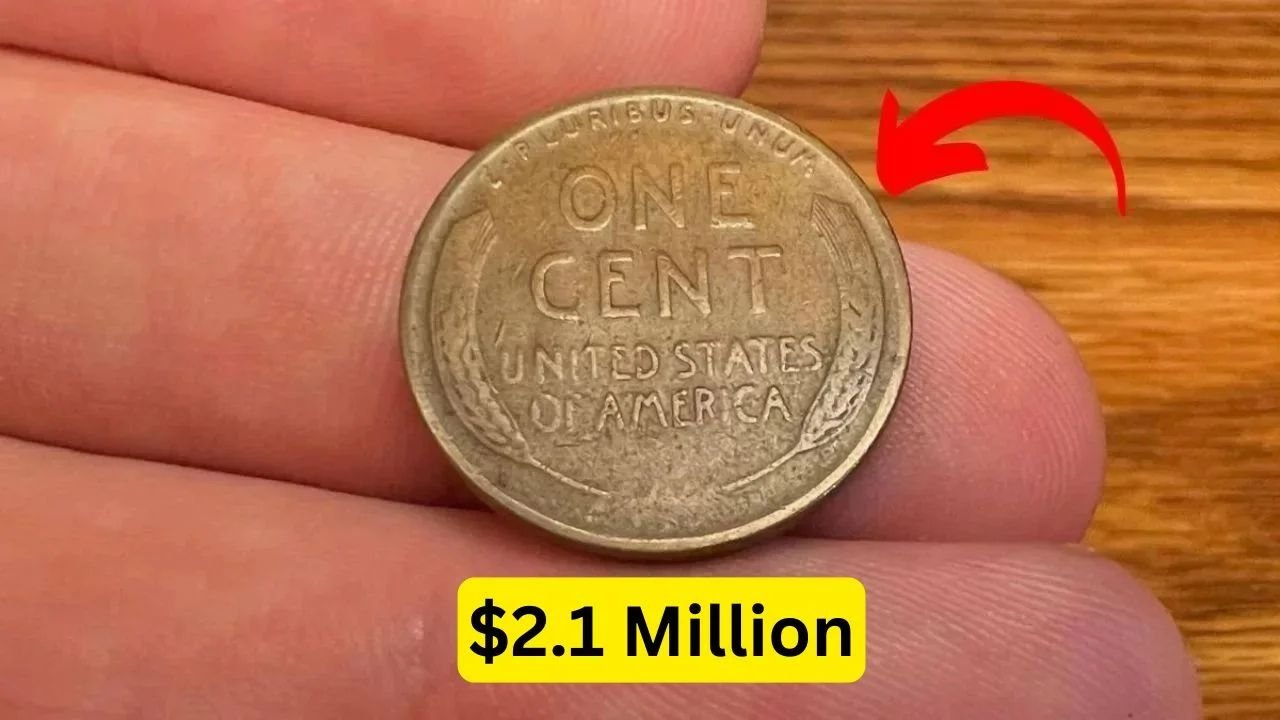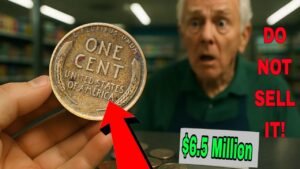Have you ever checked the pennies in your change? Most are only worth one cent, but a rare few Lincoln Wheat Pennies have sold for more than $2.1 million. First minted in 1909, these historic coins are highly collectible, and some rare versions are worth a fortune. Here’s how to identify them, why they’re valuable, and where you might find one.
What Is a Lincoln Wheat Penny?
The Lincoln Wheat Penny is a U.S. one-cent coin minted from 1909 to 1958. It features President Abraham Lincoln on the front and two wheat stalks on the back. Designed by Victor David Brenner, it was the first coin to feature a U.S. president. While most are common, rare varieties and minting errors make some of these pennies worth millions.
Why Are Some Wheat Pennies So Valuable?
Collectors pay huge sums for certain Lincoln Wheat Pennies due to rarity, errors, condition, and historical value. Some mint runs produced very few coins, others were struck with mistakes like doubled lettering, and coins preserved in excellent condition are worth far more than those heavily circulated.
The Most Valuable Lincoln Wheat Pennies
Here are some of the rarest examples and their estimated values:
- 1909-S VDB – Only 484,000 produced with designer initials. Value: $100,000–$2.1M+
- 1943 Bronze – Accidentally struck in bronze instead of steel. Value: $1M–$2.1M+
- 1955 Doubled Die – Strong double-stamped lettering. Value: $20,000–$100,000
- 1969-S Doubled Die – Doubled date and letters. Value: $25,000–$100,000
- 1914-D – Low mintage from Denver Mint. Value: $50,000–$200,000
Famous Examples
The 1909-S VDB is one of the most sought-after pennies. In 2019, one sold for more than $2.1 million. The 1943 Bronze penny is another star—created by mistake during World War II when most pennies were made of steel. One sold for $1.7 million in 2010. The 1955 and 1969-S Doubled Die pennies are easy to spot with a magnifying glass, showing clear doubling on the date and lettering. Even the 1914-D penny, though not an error, is extremely valuable due to low production.
How to Spot a Valuable Wheat Penny
If you think you may have a rare penny, check the following: the date and mint mark (look under the year for “S” or “D”), search for errors like doubling, use a magnet on 1943 pennies to see if it’s bronze (non-magnetic), examine the condition, and consider getting it professionally graded by PCGS or NGC.
Where Can You Find Them?
Valuable Wheat Pennies can still turn up in unexpected places: old jars of coins, inherited collections, bank coin rolls, flea markets, garage sales, and even everyday pocket change.
How to Protect and Sell Valuable Pennies
If you find a rare coin, don’t clean it—cleaning reduces value. Store it in a protective holder, have it graded by a professional service, research recent auction sales, and if selling, use a trusted dealer or auction house.
Why Collectors Love Them
Lincoln Wheat Pennies were minted during important times in U.S. history, from the Great Depression to World War II. Collectors value not just the money but the story behind each coin. Even common Wheat Pennies in excellent condition can bring $10–$50.
Conclusion
The Lincoln Wheat Penny is much more than pocket change—it’s a piece of American history that could be worth a life-changing amount. From the 1909-S VDB to the 1943 Bronze, these coins have turned a single cent into millions. Next time you check your change, look carefully—you might be holding a fortune.
FAQs
What makes a Lincoln Wheat Penny valuable? Rarity, minting errors, condition, and historical significance.
How can I tell if mine is rare? Look at the date, mint mark, and check for errors like doubling. Test 1943 coins with a magnet.
Where can I sell one? Auction houses, coin dealers, or online platforms like eBay. Always get it appraised first.
Should I clean my penny? No, cleaning lowers value. Keep it as is.
How do I get it appraised? Use grading services like PCGS or NGC, or visit a trusted coin dealer for an expert opinion.



